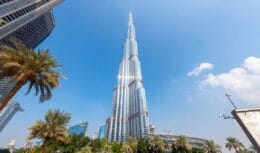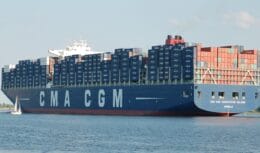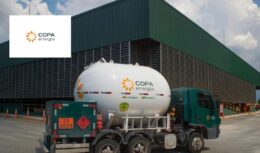
Exploring oil palm biomass: the energy potential of the Brazilian “Pre-Sal Verde”
In the shift towards a more sustainable economy, Brazil presents a new perspective in the field of clean and renewable energy. During the 22nd LIDE Business Forum, which took place in Rio de Janeiro, Milton Steagall, CEO of the BBF Group (Brasil BioFuels), shed light on the country’s “green pre-salt” – a vast potential for the production of biofuels derived from oil palm biomass, cultivated in the Amazon region.
The oil palm: a giant of biomass in the Amazon region
Steagall explained that each hectare planted with oil palm, with its 143 trees per hectare, is a huge repository of biomass ready to be transformed into biofuel. This serves as an efficient generator of clean and renewable electrical energy, mainly in isolated areas in the Amazon. With the forecast for the production of second generation biofuels, such as Sustainable Aviation Fuel (SAF) and Hydrotreated Vegetable Oil (HVO) from 2026, this source of energy seems to be a promising solution for the future of Brazil.
Under Brazil's stringent environmental guidelines, it is currently possible to grow oil palm on 31 million hectares. The BBF Group is a pioneer in this initiative, with plantations covering 75 hectares, spread across the states of Pará and Roraima.
“We built a solid legal framework to promote oil palm cultivation, which culminated in the Palm Agro-Environmental Zoning in 2010. This legislation guarantees that oil palm will only be cultivated in degraded areas of the Amazon until December 2007, which means 31 million hectares. If this area were really used, we would have a second 'pre-salt' in Brazil”, declared Steagall.
The energy transformation in the Amazon: a solution for isolated areas
Steagall's vision presents a viable solution for the isolated areas of the Amazon region, which currently have 212 locations outside the national energy system, served mainly by thermoelectric plants powered by fossil fuels.
The BBF Group, currently with 38 thermoelectric plants and a total generation capacity of 238 MW, is helping to change this scenario. Currently, 25 plants are in operation with a capacity to generate 86,8 MW, serving 140 thousand people. This effort has allowed the reduction in the use of more than 106,4 million liters of fossil diesel in the Amazon per year, reducing the emission of about 250 thousand tons of carbon equivalent in the atmosphere.
The singularity of the Brazilian case in the energy transition
PUC-Rio professor David Zylbersztajn, a member of the panel, pointed out that the energy transition in Brazil is marked by singularities. Only 25% of the country's CO2 emissions come from the industrial and electrical sector, in contrast to 75% of global emissions. Brazil also stands out in the biofuels scenario, which reinforces the idea of a “green pre-salt”.
The panel “The Recovery in Infrastructure and Energy Alternatives” also had the participation of government representatives, energy industry and academia, reiterating the importance of dialogue and cooperation to build a more sustainable energy future.












Air Force F-16 fighters…
True friend, what they shot down were…
Air Force F-16 fighters…
I would like to know what planet you live on…
Air Force F-16 fighters…
Everything is fine, 100-year secrecy,…
Air Force F-16 fighters…
Well... It's flying scrap... Typical...
Air Force F-16 fighters…
Which genocide are you talking about? Than…
I WOULD LIKE TO WORK IN THE DS LOGISTICS AREA, I WANT TO TRAVEL…
DON'T think you'll get into EB,...
That's it AE.. let's steal the will...
We are already late. The world should have…
Good evening, I have been working as a mechanic for 15 years…
This wind farm is simply fantastic! *****
I already served in the War Shooting,…
I don't have a high school diploma,...